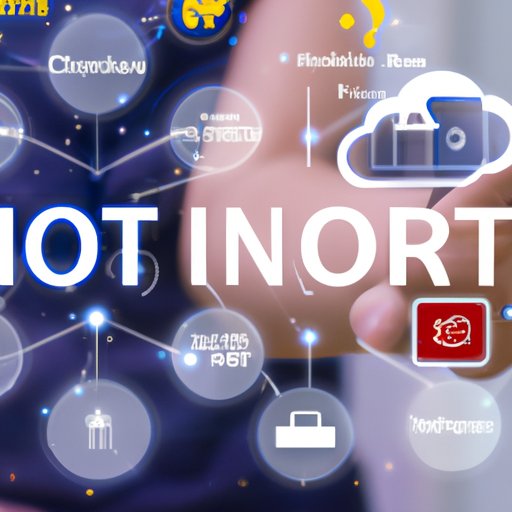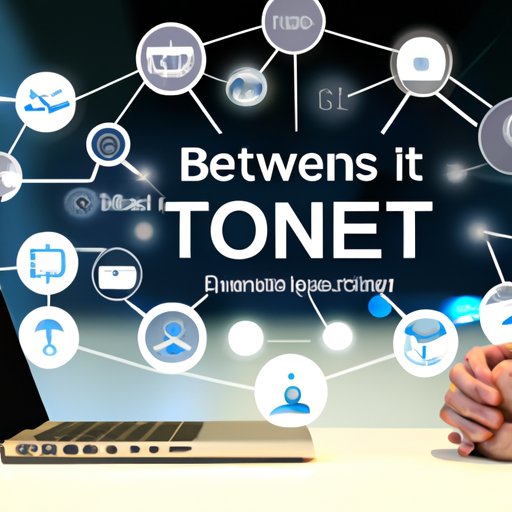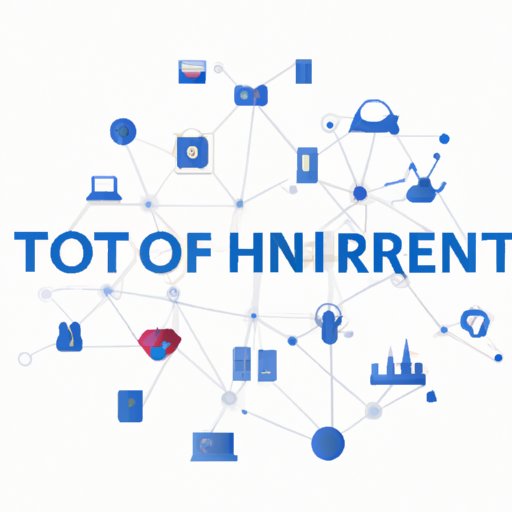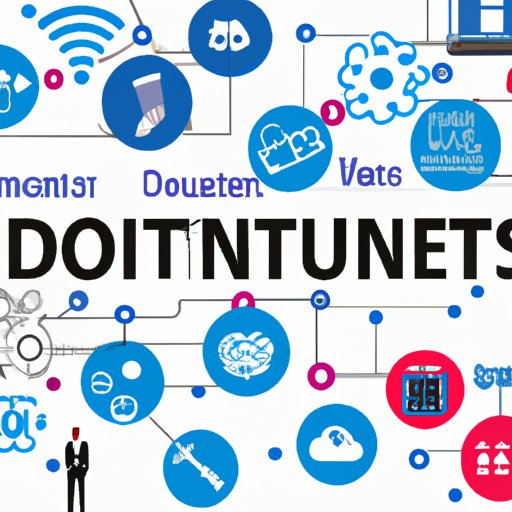Introduction
The Internet of Things (IoT) is a rapidly evolving technology that has been gaining traction in recent years. IoT technology involves connecting physical objects to the internet, allowing them to communicate with each other and exchange data. This technology has the potential to revolutionize many aspects of our lives, from how we interact with our environment to how businesses operate. In this article, we will explore what is IoT technology and how it works.
Exploring IoT Technology: A Comprehensive Guide to Understanding How it Works
At its core, IoT technology involves connecting physical objects and devices to the internet. This allows them to send and receive data, and to interact with each other. To understand how IoT technology works, it’s important to look at the different components involved.
Explaining the Different Components of IoT Technology
IoT technology is composed of four main components: embedded systems, sensors, communication networks, and cloud computing. Embedded systems are computer systems that are integrated into physical objects or devices. They allow these objects to be monitored, controlled, and interacted with remotely. Sensors are devices that measure physical characteristics such as temperature, pressure, and motion. Communication networks are the channels through which data is transmitted between connected objects. Finally, cloud computing refers to the use of remote servers for storing and processing data.
Understanding the Role of Sensors in IoT Technology
Sensors play a crucial role in IoT technology. They are responsible for collecting data from the physical environment and transmitting it over the network. This data can then be used to monitor physical conditions, trigger events, and take action. For example, a sensor could be used to detect when a refrigerator door is opened, triggering an alert that sends a notification to the user.
Examining How Data is Used in IoT Applications
Data collected by sensors is used in a variety of ways. It can be used to monitor physical conditions, trigger events, and take action. For example, a sensor can be used to monitor the temperature of a room and trigger an alert if it gets too hot or cold. Data can also be used to make predictions about future conditions, such as predicting when a machine needs maintenance. Finally, data can be used to control physical objects, such as turning lights on and off.

The Impact of IoT Technology on Modern Life
IoT technology is already having a significant impact on modern life. It is being used in a variety of everyday applications, from smart home devices to connected cars. Smart home devices allow users to control their homes remotely, from adjusting the thermostat to unlocking doors. Connected cars allow drivers to monitor their vehicles remotely, from tracking location to diagnosing problems. IoT technology is also being used in healthcare, agriculture, and manufacturing.
IoT technology has the potential to disrupt existing industries and create new ones. For example, the emergence of autonomous vehicles could lead to the displacement of traditional transportation services. Additionally, the use of sensors and data analysis in healthcare could lead to more accurate diagnoses and improved patient outcomes.

Leveraging IoT Technology for Business Benefits
Businesses can leverage IoT technology to gain competitive advantages. By connecting physical objects and devices to the internet, businesses can monitor and control their operations more efficiently. This can lead to improved customer service, reduced costs, and increased productivity. Additionally, businesses can use data collected from connected devices to make better decisions and gain insights into customer behavior.
However, there are some challenges associated with adopting IoT technology. Businesses must invest in the necessary hardware and software, as well as the infrastructure to support it. Additionally, they must ensure that their data is secure, as unauthorized access to sensitive data can have serious consequences.

The Future of IoT Technology
IoT technology is still in its infancy, but it is expected to continue to grow and develop in the coming years. The number of connected devices is expected to increase significantly, as more objects become connected to the internet. Additionally, new applications of IoT technology are expected to emerge, such as using sensors to monitor air quality or traffic patterns.
As IoT technology continues to evolve, the potential for disruption of existing industries will also grow. Companies that fail to embrace IoT technology risk being left behind, as their competitors take advantage of the opportunities offered by the technology.
The Benefits and Risks of IoT Technology
IoT technology offers numerous potential benefits, from improved efficiency and productivity to better customer service. However, it also carries some risks, such as security breaches and privacy violations. Companies must consider the potential benefits and risks before adopting IoT technology.
Security is a major concern when it comes to IoT technology. Companies must ensure that their data is secure, as unauthorized access to sensitive data can have serious consequences. Additionally, companies must consider the potential for privacy violations, as data collected from connected devices could be used to track individuals without their knowledge.
Analyzing the IoT Ecosystem
The development of IoT technology involves a complex ecosystem of stakeholders. These include hardware and software vendors, service providers, and open source initiatives. Hardware and software vendors provide the necessary components for building IoT solutions, while service providers offer services such as data storage, analytics, and monitoring.
Open source initiatives are also playing an important role in the development of IoT technology. These initiatives provide open source software and tools that enable developers to quickly build IoT solutions. Additionally, they provide a platform for collaboration and sharing of best practices among developers.
An Introduction to Developing IoT Solutions
Developing IoT solutions requires a combination of hardware, software, and networking skills. Common tools and technologies used in the development of IoT solutions include microcontrollers, programming languages such as C++ and Python, and wireless communication protocols such as Bluetooth and Wi-Fi. Additionally, developers must be familiar with cloud computing platforms such as Amazon Web Services and Microsoft Azure.
Conclusion
In this article, we explored what is IoT technology and how it works. We looked at the different components of IoT technology, the role of sensors, how data is used, the potential impacts on modern life, business benefits, risks, and the future of IoT. We also examined the IoT ecosystem, including the key players and open source initiatives. Finally, we discussed the basics of developing IoT solutions.
IoT technology has the potential to revolutionize many aspects of our lives, from how we interact with our environment to how businesses operate. Companies must weigh the potential benefits and risks before adopting IoT technology, and be sure to secure their data to protect against unauthorized access. As IoT technology continues to evolve, the potential for disruption of existing industries will only grow.
(Note: Is this article not meeting your expectations? Do you have knowledge or insights to share? Unlock new opportunities and expand your reach by joining our authors team. Click Registration to join us and share your expertise with our readers.)
